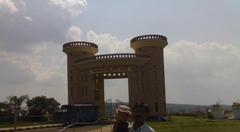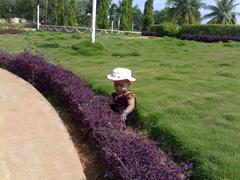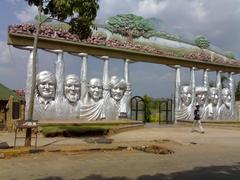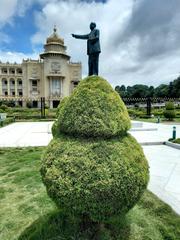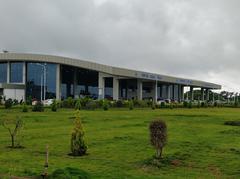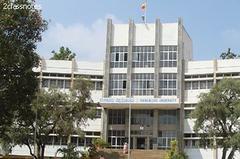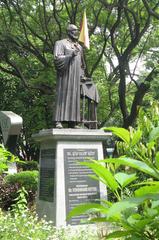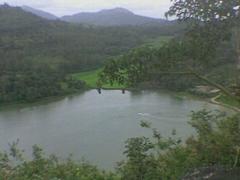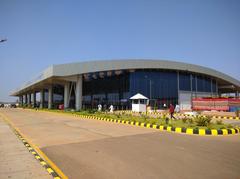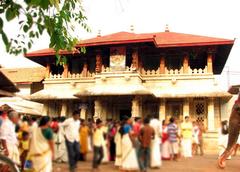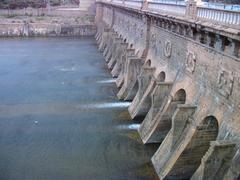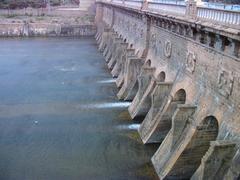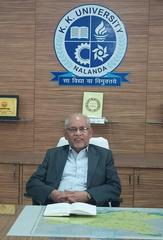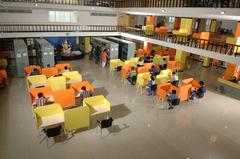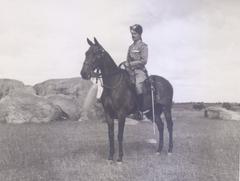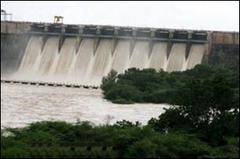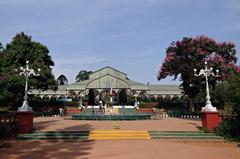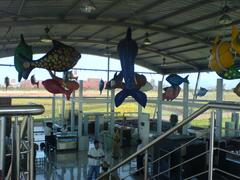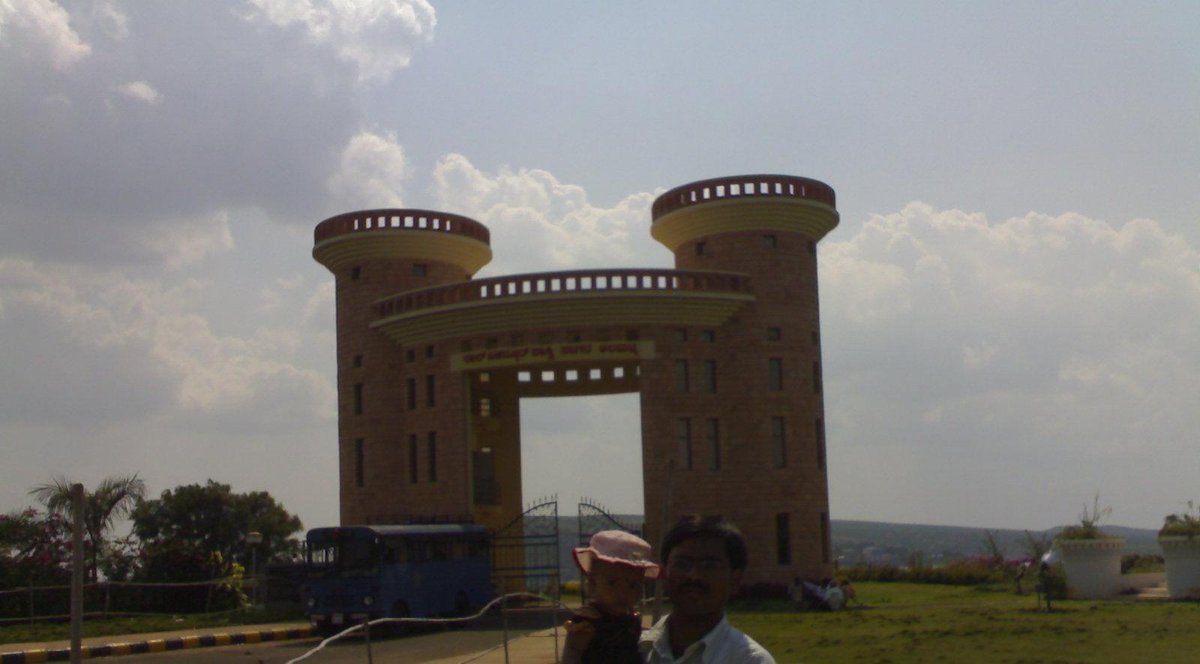
Almatti Dam Visiting Hours, Tickets, and Travel Guide – Karnataka, India
Date: 14/06/2025
Introduction
Located on the Krishna River in northern Karnataka, the Almatti Dam (also known as the Lal Bahadur Shastri Dam) is a marvel of modern engineering and a symbol of regional development. As the centerpiece of the Upper Krishna Irrigation Project (UKIP), completed in 2005, the dam plays a vital role in hydroelectric power generation, irrigation, flood control, and water supply for Karnataka and neighboring states. Over time, Almatti has evolved into a popular tourist destination, offering visitors panoramic vistas, landscaped gardens, boating, and unique cultural experiences that showcase both nature and technology.
This guide provides a comprehensive overview covering Almatti Dam’s historical background, engineering significance, environmental and social impacts, visitor information (including hours and ticket details), travel tips, and nearby attractions. Whether you’re an engineering enthusiast, nature lover, or a cultural explorer, Almatti Dam offers a unique lens into Karnataka’s progress and natural beauty.
For the latest updates, please refer to Karnataka Tourism and Wikipedia.
Table of Contents
- Introduction
- Historical Background
- Engineering Significance
- Visiting Almatti Dam
- The Upper Krishna Project: Context & Impact
- Water Management & Environmental Considerations
- Regional Development & Future Prospects
- Practical Visitor Information
- Key Attractions at Almatti Dam
- Visitor Facilities and Safety
- Special Events and Festivals
- FAQs
- Contacts & Resources
- Plan Your Visit
- References
Historical Background
Genesis and Planning
The Almatti Dam is central to the Upper Krishna Irrigation Project (UKIP), a multipurpose river valley initiative designed to address chronic drought and water scarcity in northern Karnataka. Planning began in the 1950s, with the formal project taking shape by 1963 (srujani.in). Two major dams—Almatti and Narayanapur—were at the core of this vision, intended to provide reliable irrigation, hydropower, drinking water, and flood control (Wikipedia).
Legal and Political Challenges
Almatti’s construction was shaped by interstate disputes over Krishna River water sharing, leading to interventions by the Krishna Water Disputes Tribunal and the Brijesh Kumar Tribunal. After years of negotiation and Supreme Court deliberations, the dam’s full reservoir level (FRL) was set at 524 meters, allowing a gross storage capacity of about 200 TMC. This resolution became a model for interstate water governance (Wikipedia).
Socio-Economic Impact
Prior to the dam, the region suffered frequent droughts. Almatti now irrigates hundreds of thousands of hectares, supporting cultivation of high-value crops like sugarcane and cotton, and generates 290 MW of hydroelectric power. The Lal Bahadur Shastri Sagar reservoir has also spurred tourism and recreation, boosting local livelihoods.
Engineering Significance
Dam Structure
Almatti Dam is a composite earthen and concrete structure, 1,565 meters long and 52.25 meters high, with 26 radial crest gates and a spillway capable of discharging 1.2 million cubic feet per second. The reservoir holds about 3.19 billion cubic meters of water, making it one of India’s major dams (Wikipedia).
Hydroelectric Power
The dam houses a hydroelectric station with a 290 MW capacity, utilizing Kaplan turbines. Water released for power generation is subsequently used for irrigation downstream, optimizing resource use (Wikipedia).
Irrigation and Water Management
Almatti’s canal network irrigates over 500,000 hectares, transforming formerly drought-prone zones. Lift irrigation schemes, such as the Sonna and Rolli-Mannikeri projects, deliver water to higher elevations, enabling multi-season cropping (srujani.in).
Environmental and Social Considerations
Construction required the resettlement of thousands, leading to the creation of Bagalkot Navanagar township. The reservoir also supports fisheries, attracts migratory birds, and is a growing eco-tourism destination. Ongoing management efforts address siltation, water quality, and biodiversity (Ethereal Yana; Springer).
Tourism Infrastructure
Landscaped gardens, musical fountains, boating, and themed parks (Rock Garden, Japanese Garden Lake, Lava Kusha Park, and Gopala Krishna Park) provide rich cultural and recreational experiences. The site is well-developed for tourism, with amenities for families and groups.
Visiting Almatti Dam
Visiting Hours
- General Public: 9:00 AM to 6:00 PM (some sources list 8:00 AM as opening; confirm locally)
- Gardens & Musical Fountain: Open until 7:00 PM; fountain show typically 7:00–8:00 PM
Tickets and Entry Fees
- Dam Premises: Free entry (registration at security may be required)
- Gardens/Musical Fountain: ₹20–₹50 per person (subject to change)
- Boating and Special Attractions: Nominal additional fees
Accessibility
The dam complex is generally accessible, with paved paths and ramps in the main garden areas. Some terrain may be challenging for visitors with mobility needs, especially during the monsoon.
How to Reach
- By Road: 40 km from Vijayapura (Bijapur), 66 km from Bagalkot, ~200 km from Hubballi (nearest airport), accessible via national highways and local buses/taxis.
- By Rail: Almatti Railway Station (6 km from the dam) and Bagalkot Railway Station.
- By Air: Hubballi Airport (200 km); Belgaum Airport (150 km); local transport available from these hubs (theiashub.com).
Guided Tours and Events
Local operators offer guided tours. Occasionally, the dam complex hosts cultural programs, flower shows, and festivals (especially on Karnataka Rajyotsava and World Water Day). Check with Karnataka Tourism for schedules.
Best Photography Spots
- Dam crest at sunset
- Musical fountain and gardens
- Japanese Garden Lake
- Reservoir viewpoints
The Upper Krishna Project: Context & Impact
The Upper Krishna Project (UKP) was conceived to bring irrigation, power, and water security to northern Karnataka, with Almatti and Narayanapur dams as its pillars. The project irrigates nearly 425,000 hectares (Stage I) and over 197,000 hectares (Stage II), with Stage III aiming for a further 594,000 hectares (srujani.in). Almatti’s lift irrigation schemes reach otherwise inaccessible farmlands, drastically improving local economies.
Water Management & Environmental Considerations
Almatti Dam’s regulated water releases balance irrigation, hydropower, and downstream needs, while also mitigating flood risks through its 26 spillway gates (oneindia.com). Sediment control, water quality monitoring, and biodiversity conservation are ongoing priorities. The dam’s development required large-scale resettlement, with mixed outcomes for displaced communities (Springer; Ethereal Yana).
Regional Development & Future Prospects
Almatti Dam underpins food security, renewable energy, drinking water supply, and industrial growth in the region. Stage III of UKP and proposals to raise the dam’s height aim to further expand benefits, though these are subject to environmental, social, and interstate scrutiny (Times of India). The project is increasingly aligned with global ESG and sustainability goals (Harvard Law School Forum).
Practical Visitor Information
Facilities
- Visitor center with maps and brochures
- Restrooms and drinking water
- Shaded seating and picnic spots
- Parking for cars and buses
- Children’s park and playgrounds
Food and Accommodation
- Small eateries and snack stalls near the dam/gardens
- For extensive dining and lodging: head to Almatti town, Bagalkot, or Vijayapura
Safety
- Swimming strictly prohibited; fishing not permitted for tourists
- Photography allowed in most areas; restrictions near operational zones
- Follow posted safety instructions, especially during monsoon
Key Attractions at Almatti Dam
1. Dam Structure & Reservoir
A gravity dam standing at 519.6 meters above mean sea level, creating a vast reservoir with panoramic Krishna River views (theweek.in).
2. Almatti Gardens
- Rock Garden: 35 acres, over 1,500 sculptures
- Musical Fountain: Evening shows, water, light, and music
- Other Gardens: Mughal, Rose, Lava Kusha, and Krishna Gardens
3. Boating & Water Activities
Boating available (September–February, post-monsoon). Paddle and motorboats for hire. Check for seasonal availability.
4. Bird Watching & Nature Trails
Popular for migratory and resident birds; best during early mornings and late afternoons.
5. Krishna River Viewpoints
Designated spots for sunrise/sunset views and photography.
6. Picnic Areas & Children’s Park
Family-friendly spaces with playgrounds and basic amenities.
Nearby Attractions
- Kudalasangama: Confluence of Krishna and Malaprabha rivers, 15 km away; religious and historical significance.
- Bijapur (Vijayapura): 65 km away; home to Gol Gumbaz, Ibrahim Rauza, and other Indo-Islamic monuments.
- Bagalkot, Badami, Pattadakal, & Aihole: Renowned for ancient temples and UNESCO World Heritage sites.
Special Events and Festivals
Cultural programs, flower shows, and environmental events are held occasionally, especially on state and national observances.
Frequently Asked Questions (FAQs)
Q: What are the Almatti Dam visiting hours?
A: 9:00 AM–6:00 PM for the dam; gardens open until 7:00 PM. Musical fountain: 7:00–8:00 PM.
Q: What are the Almatti Dam ticket prices?
A: Free entry to the dam; ₹20–₹50 for gardens and special attractions.
Q: Is boating available?
A: Yes, during post-monsoon months, subject to safety conditions.
Q: Are accommodations available nearby?
A: Limited in Almatti; more options in Bagalkot and Bijapur.
Q: Is Almatti Dam accessible for people with disabilities?
A: Main areas are accessible, but some paths may be difficult during monsoon.
Q: Can I swim or fish in the reservoir?
A: Swimming is prohibited; fishing is not permitted for tourists.
Essential Contacts
- Information Center: Main entrance, for maps and assistance
- Tourist Helpline: Karnataka State Tourism Department
- Emergency Services: Details displayed at the entrance
For the latest updates, check with the Karnataka State Tourism Department.
Environmental and Social Impact
The Almatti Dam profoundly changed the region’s hydrology and ecology. While it has boosted agriculture, power, and tourism, it also led to submergence, displacement, and ecological shifts. Ongoing sustainability initiatives include sediment and water quality management, climate adaptation strategies, and community engagement (Springer; Harvard Law School Forum).
Plan Your Visit
Almatti Dam exemplifies the intersection of engineering, sustainable water management, and socio-economic development in Karnataka. Visitors can expect convenient access, affordable fees, and a range of attractions from gardens and boating to nearby heritage sites. For real-time updates, download the Audiala app and consult official tourism platforms.
References
- Almatti Dam – Wikipedia
- Karnataka Tourism Official Site
- Upper Krishna Project Details – Srujani
- The Week – News and Updates
- Springer – Environmental Impact Studies
- The IAS Hub – Visitor Guide
- Ethereal Yana – Almatti Dam Natural and Social Impact
- OneIndia – Dam Water Levels and Regional Impact
- Times of India – Almatti Dam Height Proposal
- Harvard Law School Forum – ESG and Sustainability
Plan your journey to Almatti Dam today, and immerse yourself in this engineering marvel and the natural beauty of Karnataka. For updates and travel insights, download the Audiala app and explore Karnataka’s heritage.
